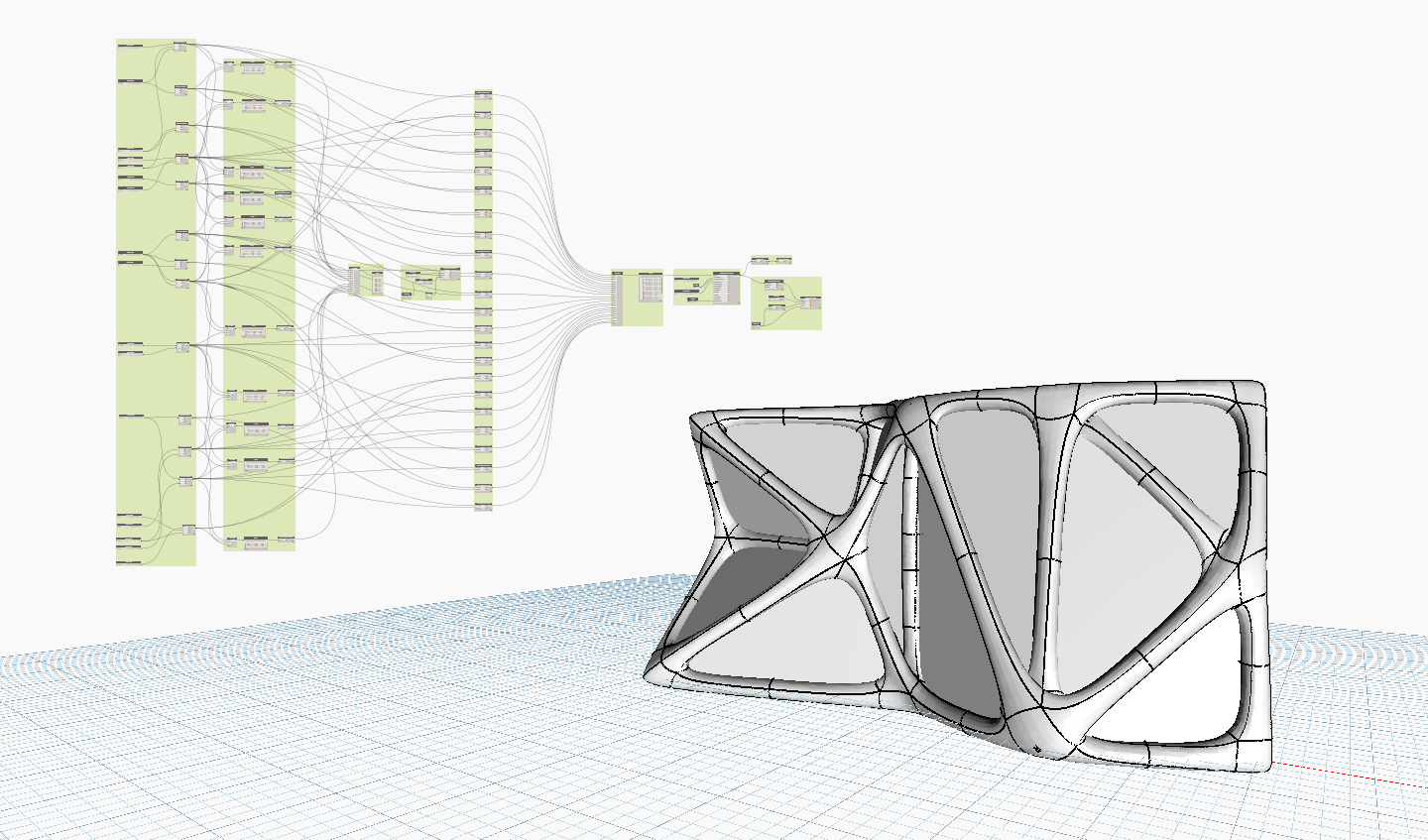At CallisonRTKL we are excited by the impact VR, Automation and Generative Design is having in our Industry. We believe these tools will enhance our ability to address the challenge of envisioning the places of tomorrow in a constantly changing environment. Using automated processes, designers can produce more design options, faster and with quantifiable measures of performance. However, new tools provide their own challenges, including training our colleagues to incorporate new software into their workflow.
One example of this is how Dynamo is used – We have highly skilled Dynamo users who produce scripts to do a range of tasks from automating workflows to producing complex forms but we wanted to find a fun way to introduce more people to the potential Dynamo has to enhance our design process, that is how we came up with the Scriptathon. Launched in March 2019, in the London, Dubai and Manchester offices, it was loosely based off a hackathon, but focused on scripting – hence the name!

The Scriptathon brief was to design a screen using a script. The screen could be anything from a curtain wall panel, an interior partition, a garden fence, or public art piece. We wanted to use a simple brief to set a framework within which the participants could exercise their design skills.
We created a month-long program of training and events which evolved during the six weeks to suit the needs of the participants. Tutorials were run in both the London and Dubai offices to help people get started from scratch, we live streamed all the sessions, which were recorded for access via the Scriptathon Teams channel. Three of our colleagues (Jason, Donovan and Kashif) produced screen templates with pre-recorded video tutorials to give complete beginners a chance to replicate and manipulate existing designs. There was also a Virtual Help Desk with Daniel, an Autodesk expert, where people could get one-on-one help to build their screen.
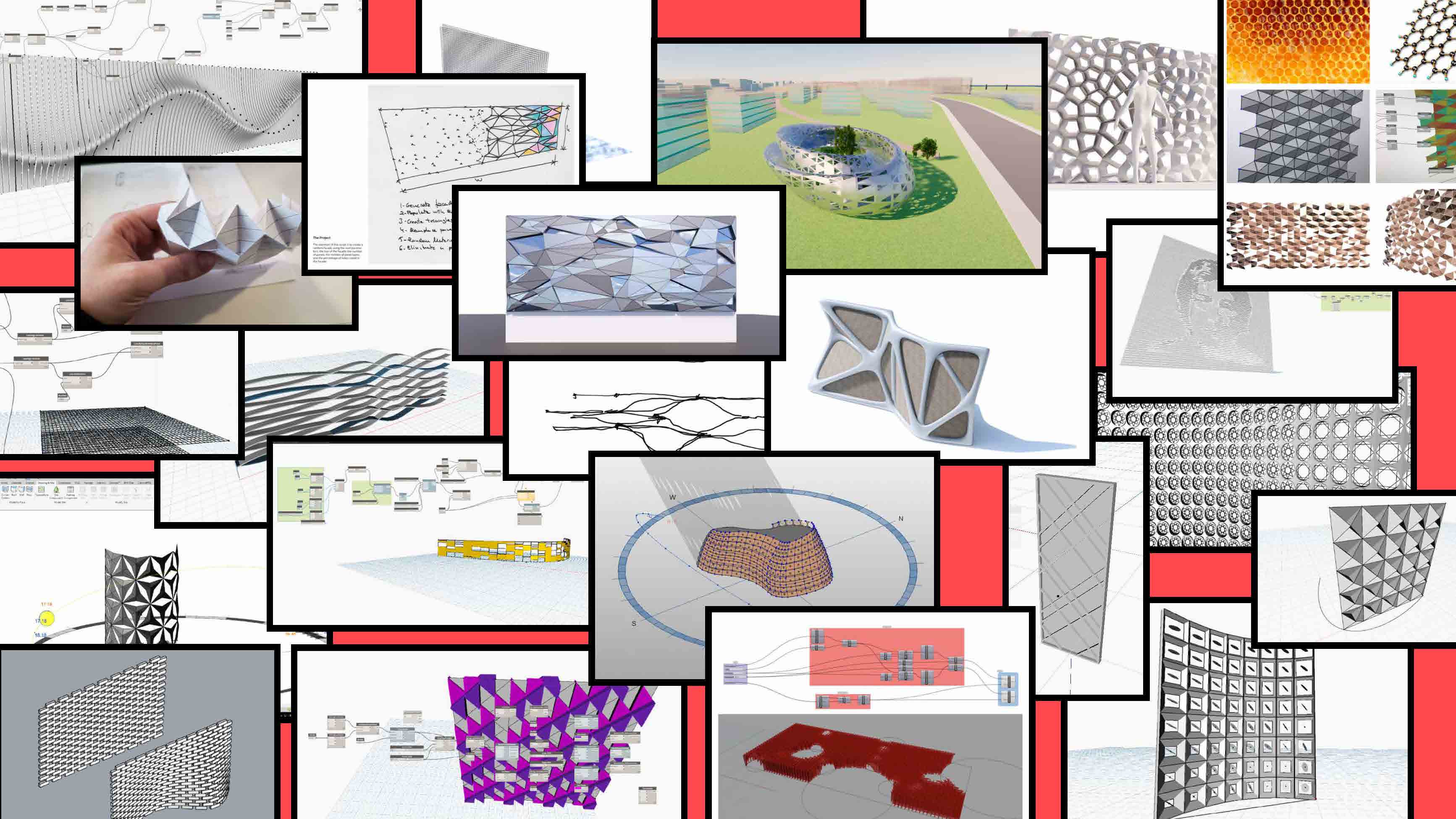
We had some amazing submissions from complete beginners to advanced users and even persuaded our HR associate to submit a screen. Below you can see in more detail some of the amazing scripts and screens that were produced, described by their creators – feel free to reach out to them if you’d like to learn more about how their scripts work.
Lais Tonso

“This screen was inspired by my childhood hobby, folding origamis. What I most like about this specific shape is that you can create movement and volume from a plane sheet of paper. To develop the Dynamo script, I folded a model to understand the relationships between planes, shapes, lines and point.

Afterwards, going back to the digital environment, I first created a plane, then divided it into triangular panels, using this panels, I created outside points to be able to shape the triangle, and finally connected all dots with lines and all lines became shapes. Data management was fundamental to this script, since one of my biggest struggles was to be able to change the number of panels without affecting the final result. To solve this, I divided the panels in 4 groups, upper half and lower half, and half left and half right. By this way, I was able change the amount of panels and the screen size without problems.”
https://www.linkedin.com/in/lais-t-66b55587/

Aya Riad

“I wanted to create an interactive screen that is user oriented and focused on the human experience. The design was biologically inspired using voronoi tessellations that model the organization of biological cells and tissues as the screen panels. Those panels’ opening size and extrusion are controlled by the proximity of the user and their movement in front of the screen with the help of a Kinect camera. The infrared sensors within the Kinect detects the motion and translates it into a set of points that are fed into my script as the attractor points that affect the design.”
https://ae.linkedin.com/in/aya-riad-14b84013a
Mohammad Khazendar
“The Mesh plasticity concept is ultimately a byproduct of pushing the boundaries of what Dynamo scripting can offer beyond the limitations of standard modeling tools in Revit, creating a bridge between the ordered and the organic. The concept comprises of a system of interactive modules that stitch together and form a fabric mesh with an organic pipe network to intensify the dynamic nature of the façade whilst abiding to a methodical algorithmic script. The logic behind the script is to create a set of points that can generate a line network which represents the path of the pipes. The lines then can form surfaces that occupy the internal areas and creates an opportunity for adding various shading materials options. The experimental T-spline package allowed for the generated pipe using the line network to create a homogenous organic connection from one point to another.“
https://www.linkedin.com/in/mkhazendar/
Khalid Al-Tamimi
The scriptathon experience gave me a great push into the scripting world. In my exploration, I attempted to understand scripting via the tutorials provided and I further developed the end result by introducing new parameters. Closing up openings, introducing planes with different shapes and playing with aperture using attractor points were all aspects I teste and explored in the design of the waffle screen. Dynamo as a program presented a unique opportunity, since it requires a full breakdown of the code, and understanding scripting became more interesting.

Looking into the design of the wall, the simple pseudocode I followed was to first create the line, then extrude to create a surface. I followed those steps by subdividing the surface into a grid, offset the subdivided surfaces and offset the full wall. I then selected and lofted the resulting lines to generate the new surfaces. The next step was to introduced attractor points to control the aperture of the offset grid in order to play with the sizes of the screen’s openings as the main end result. Additionally, I explored generating new surfaces from the openings outlines and controlled their orientation using surface normal as well as additional attractor points.
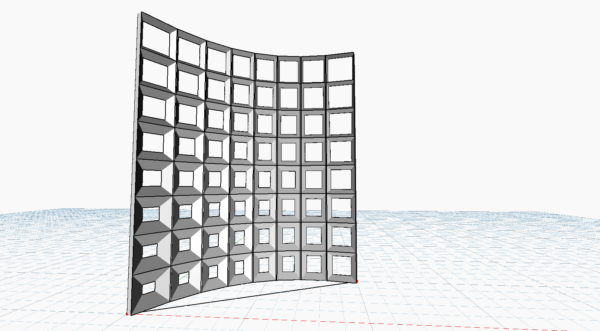
The end result was a waffle screen, with surfaces within its openings that rotate following an attractor point.The further the center of that surface is from the attractor point, the less the degree of rotation and thus the surface would close the opening.Every step counts and plays a role in the bigger picture, and it is understanding the small bits that really helps in moving ahead in the scripting world.
https://ae.linkedin.com/in/khalid-al-tamimi-7bb1853a
CONCLUSIONS:
Prizes were awarded at the end of April and guest judged by Autodesk and the Design & Innovation Group. Nandi, the VR guru in London built a VR Sculpture park to provide an interactive and immersive way to view the submissions.
The event was a real success, far beyond anything we had predicted. The participants really enjoyed learning a new skill and challenging their design skills. Learning from this event we can enhance how training is provided for other softwares and in other offices. We are already planning follow up events where we can challenge participants to reimagine the traditional design process by embracing parametric design.
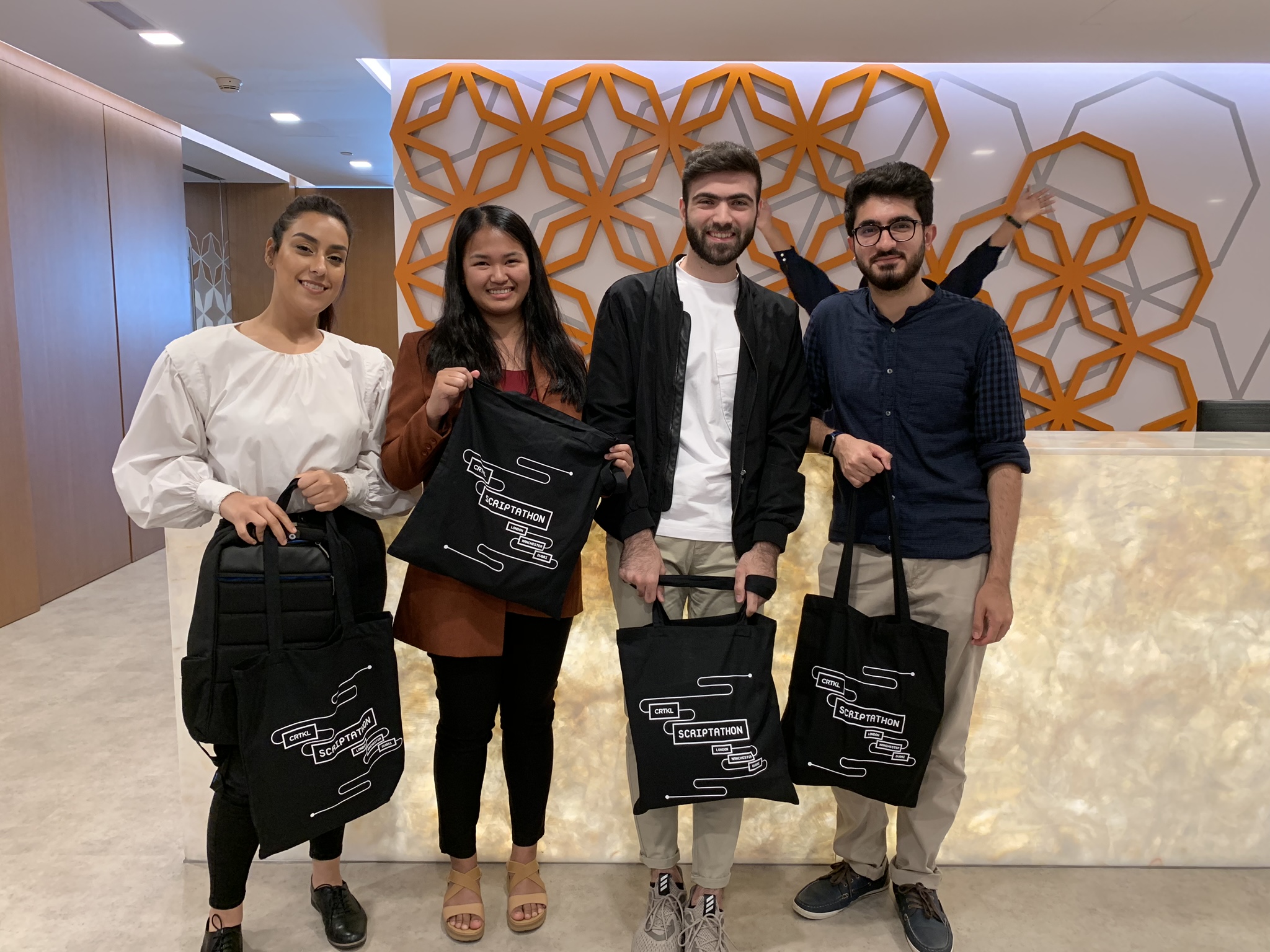

SHOUTOUTS:
Event Organization: Caoimhe Loftus (London), David Weir-McCall (Dubai), Kashif Dafedar (Dubai), Jason Wheeler (Dallas), Donovan Wilson (Seattle), Lauren Poon (London)
Microbrand & Graphic Design: Chloe Shang (London).
VR Sculpture Park: Nandi Nobell (London)
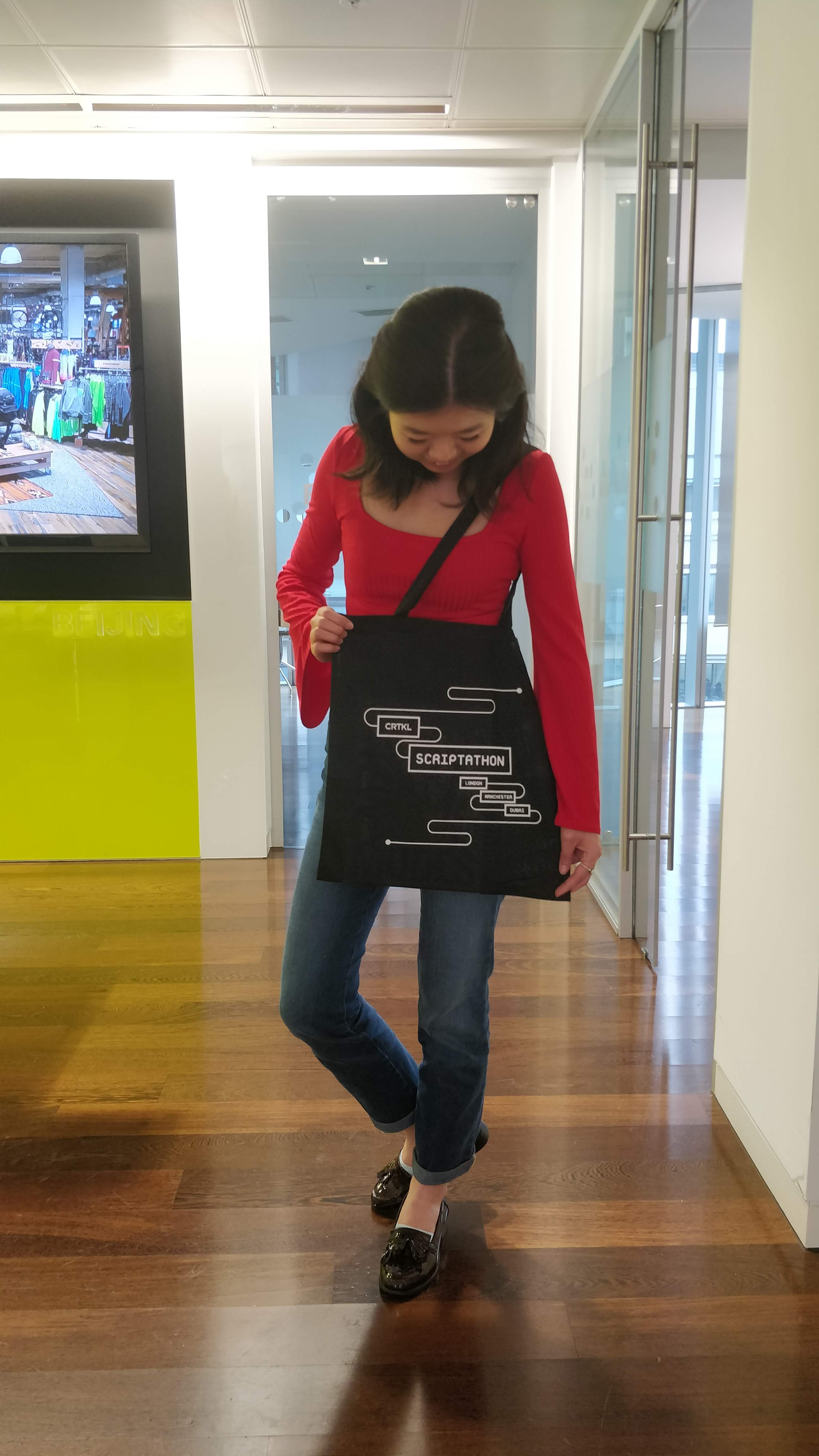
TEAM
CallisonRTKL (CRTKL) is a global practice known for the strength of our ideas, the spirit of our culture and the passion of our people to make the world a better place. People are at the center of what we do. Focusing on our relationships, with clients and teams, helps us make the big seem small, more personal, and keeps us moving in the right direction. Our process centers on creativity, cross-pollinating ideas and talents across offices to deliver quality at all levels and in all places.
As part of a global community, we realize our responsibility and strive to be an active participant in the world. In all our efforts, we set out to do the right thing for our people, our clients and our communities. At CRTKL, we’re eager to face the challenges of our world and our time and ready to ask the questions that hold others back. Our thirst for innovation and quest for creative solutions to complex issues helps set out a path that leads to new heights and continued success.
